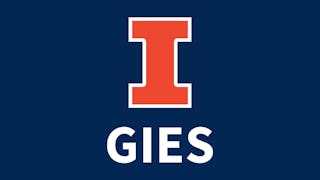In this course, you’ll explore and evaluate the many ways businesses can engage in international commerce. You’ll start by examining the three key decisions you need to make before going global, including using a practical model to help you select the right country. Next, you’ll dig into the various modes of exporting and importing, then learn about contract entry options like licensing and franchising. You'll then get to know foreign direct investment strategies, such as forming joint ventures, pursuing mergers, or making acquisitions. The course wraps up with a personal perspective on going global—guiding you through the process of deciding to go, preparing for your move, working and living abroad, and navigating the challenges of returning home. Upon completion, you will have the confidence, skills, and practical knowledge to take a business global, choose the best entry strategies, and thrive both professionally and personally in the international arena.

Enjoy unlimited growth with a year of Coursera Plus for $199 (regularly $399). Save now.

International Business Entry Strategies
This course is part of International Business Specialization

Instructor: Stephen R. Lawrence
5,713 already enrolled
Included with
(86 reviews)
Recommended experience
What you'll learn
Analyze the information needed to make going abroad decisions including timing, country selection, and mode of entry.
Critique the advantages and disadvantages of exporting and evaluate exporting compared to other country entry modes.
Critique the advantages/disadvantages of direct country entry and use this information to select the best entry mode for a given situation.
Anticipate the challenges of working and living abroad and apply known methods of mitigating those challenges.
Skills you'll gain
Details to know

Add to your LinkedIn profile
5 assignments
See how employees at top companies are mastering in-demand skills

Build your subject-matter expertise
- Learn new concepts from industry experts
- Gain a foundational understanding of a subject or tool
- Develop job-relevant skills with hands-on projects
- Earn a shareable career certificate

There are 6 modules in this course
In this course, you’ll explore and evaluate the many ways businesses can engage in international commerce. You’ll start by examining the three key decisions you need to make before going global, including using a practical model to help you select the right country. Next, you’ll dig into the various modes of exporting and importing, then learn about contract entry options like licensing and franchising. You'll then get to know foreign direct investment strategies, such as forming joint ventures, pursuing mergers, or making acquisitions. The course wraps up with a personal perspective on going global—guiding you through the process of deciding to go, preparing for your move, working and living abroad, and navigating the challenges of returning home. Upon completion, you will have the confidence, skills, and practical knowledge to take a business global, choose the best entry strategies, and thrive both professionally and personally in the international arena. This course is designed for anyone interested in international business, whether you’re already involved with businesses operating globally or you’re considering expanding abroad. It will be especially valuable if you’re looking to deepen your understanding of how companies succeed in international markets and discover the many ways you can actively participate in global business opportunities.
What's included
3 videos
In this module, you will gain a comprehensive overview of international market entry strategies. You’ll start by considering the fundamental question: “Should you go global?” and examine the key factors that will influence your decision. If you decide to expand internationally, you will then need to explore three core entry decisions: entry timing, country selection, and your choice of entry strategy. Then to help with your analysis is a discussion of entry timing, followed by a detailed analysis of country selection, guiding you through the use of the PESTEL framework to evaluate and select your target market.
What's included
7 videos2 readings1 assignment
In this module, you’ll learn how to export to a foreign market. First, you’ll explore the relationship between exporting and importing, and then you’ll walk through the steps you need to follow for successful exporting. Next, you’ll compare three alternative types of exporting: direct exporting, indirect exporting with intermediaries, and piggyback exporting. Finally, you’ll discover how to achieve successful importing, which essentially mirrors the process of successful exporting.
What's included
6 videos2 readings1 assignment
In this module, you’ll explore ways to enter foreign countries directly, including both contractual entry methods and foreign direct investment. With contractual methods, you form arm’s-length relationships with foreign companies—these include licensing, franchising, outsourcing, management contracts, and turnkey projects. If you choose foreign direct investment (FDI), you will take an active ownership role in a foreign firm. Your FDI options include joint ventures, mergers, acquisitions, and Greenfield investments.
What's included
9 videos2 readings1 assignment
In this final module, you will explore the personal side of international business by discussing what it’s like to work and live abroad as an expatriate (expat). You will identify the characteristics that make for a successful expat, and compare them with traits that may lead to less success. Next, you will review the many steps needed to take to get ready for living abroad, along with the precautions to consider. You’ll then examine what life abroad as an expatriate entails, including strategies you can use to cope with culture shock. Finally, you will consider the challenges you might face when returning home after a long assignment abroad. You then wrap up by reflecting on whether the experience is worth it for you—with the provisional answer being “yes!”
What's included
4 videos1 reading1 assignment
International Business Entry and Growth final assessment
What's included
1 video1 assignment
Earn a career certificate
Add this credential to your LinkedIn profile, resume, or CV. Share it on social media and in your performance review.
Instructor

Offered by
Explore more from Business Essentials
 Status: Free Trial
Status: Free TrialUniversity of London
 Status: Free Trial
Status: Free TrialUniversity of Illinois Urbana-Champaign
 Status: Preview
Status: PreviewUniversity of New Mexico
 Status: Preview
Status: PreviewUniversity of New Mexico
Why people choose Coursera for their career




Learner reviews
86 reviews
- 5 stars
84.88%
- 4 stars
8.13%
- 3 stars
5.81%
- 2 stars
1.16%
- 1 star
0%
Showing 3 of 86
Reviewed on Apr 12, 2021
It was a great learning experience and very much useful course, IB students go for it must recommended.
Frequently asked questions
To access the course materials, assignments and to earn a Certificate, you will need to purchase the Certificate experience when you enroll in a course. You can try a Free Trial instead, or apply for Financial Aid. The course may offer 'Full Course, No Certificate' instead. This option lets you see all course materials, submit required assessments, and get a final grade. This also means that you will not be able to purchase a Certificate experience.
When you enroll in the course, you get access to all of the courses in the Specialization, and you earn a certificate when you complete the work. Your electronic Certificate will be added to your Accomplishments page - from there, you can print your Certificate or add it to your LinkedIn profile.
Yes. In select learning programs, you can apply for financial aid or a scholarship if you can’t afford the enrollment fee. If fin aid or scholarship is available for your learning program selection, you’ll find a link to apply on the description page.
More questions
Financial aid available,





